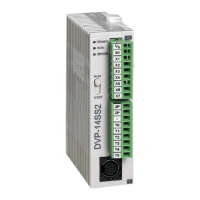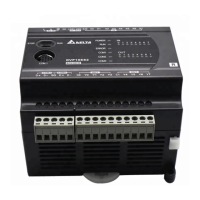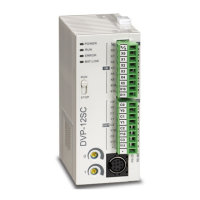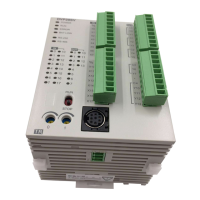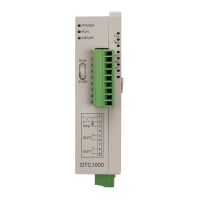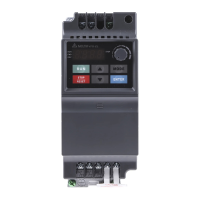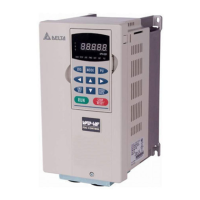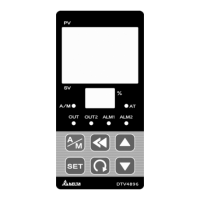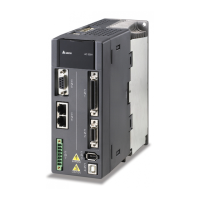Chapter 8 Logic Instructions
8.8.3 MUL
FC
MUL is used for the multiplication of two or more variables or constants.
DVP15MC11T
Parameters
Meaning
Description Valid range
In1 Multiplicand Input Multiplicand
Depends on the data type of
the variable that the input
parameter is connected to.
In2 to InN Multiplier Input
multipliers is 7, which means
that N can be 2~8 and the
number can be increased or
reduced via the programming
software in creating a program.
Depends on the data type of
the variable that the input
parameter is connected to.
Out Product Output
The multiplication result of In1
~ InN
Depends on the data type of
the variable that the output
parameter is connected to.
Boolean
Bit string Integer
Real
number
Time, date
String
BOOL
BYTE
WORD
DWORD
LWORD
USINT
UINT
UDINT
ULINT
SINT
INT
DINT
LINT
REAL
LREAL
TIME
DATE
TOD
DT
STRING
In1
to
InN
● ● ● ● ● ● ● ● ● ● ● ● ● ●
Out
● ● ● ● ● ● ● ● ● ● ● ● ● ●
Note:
The symbol ● indicates that the parameter is allowed to connect to the variable or constant of the data type.
Function Explanation
The instruction is used for the multiplication of two or more variables or constants. The result is
output to Out, that is, Out= In1 * In2 * … * InN.
The input parameters In1 ~ InN are allowed to be the variables of different data types in this
instruction. When In1 ~ InN are the variables of different data types, the multiplication will be
performed based on the data type which can contain valid ranges of In1 ~ InN values. For example,
the data type of Out is DINT if the data type of In1 is INT and In2 is DINT.
MUL
EN ENO
In1 Out
InN
.
.
.
.
..
8-59
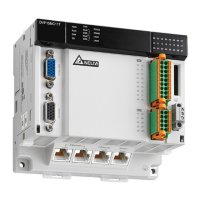
